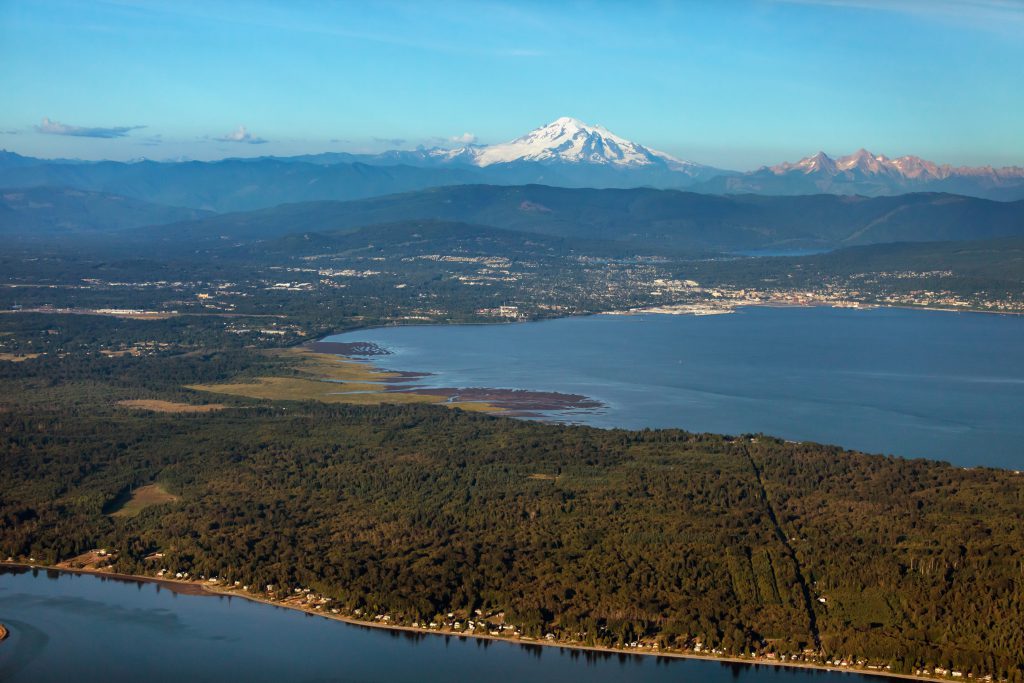
In December 2022, Congress passed the National Defense Authorization Act, which included key provisions of the PUGET SOS Act. This framework affirms and advances Puget Sound recovery as a national priority.
Congress also passed an appropriations bill that included $54 million in funding for the Puget Sound Geographic Program, a $19 million increase over the previous fiscal year. The Puget Sound Geographic Program provides funding to state, local, and tribal governments to implement the Action Agenda through projects that improve water quality, enhance fish passage, increase salmon habitat, and protect shorelines.
In this interview, Ahren Stroming, special assistant for federal affairs at the Puget Sound Partnership, discusses the PUGET SOS Act, the increase in funding for Puget Sound recovery, and other recent federal actions.
Key parts of the PUGET SOS Act were passed in the National Defense Authorization Act in December. What does that framework do and why is that important for recovery?
Ahren Stroming: PUGET SOS is fundamentally a governance bill. Governance might not necessarily sound exciting, but if you’re interested in ensuring that Puget Sound recovery is broad, strategic, streamlined, and durable—and ultimately successful—then getting the governance right is essential.
Specifically, the PUGET SOS Act does two things. First, it creates a national office for Puget Sound recovery at the Environmental Protection Agency, at EPA. That office will be in Seattle, and that’s something that exists for other significant water bodies at EPA, like the Great Lakes and Chesapeake Bay.
It will be a durable resource for federal attention and investment in Puget Sound recovery going forward. It ensures that we don’t have to fight every year to make sure the federal government understands the importance of Puget Sound recovery. They’re acknowledging it and creating an office at EPA to work on it. That office will be able to receive appropriations in the future.
“I think broadly speaking, though, what PUGET SOS Act accomplishes is it communicates to the country that Puget Sound recovery is a national priority.” — Ahren Stroming
Second, it codifies the Puget Sound Federal Leadership Task Force. It states that the members of the task force should include more than the usual suspects of federal agencies. That’s important because it ensures that the resources of the federal government across its many agencies are coordinated. We can match up skill sets and jurisdictions with the appropriate agencies all pulling the same direction towards Puget Sound recovery.
It also helps to build in some accountability to the system. It holds the feet to the fire of some of our federal agency partners to ensure that they’re showing up in their work for Puget Sound recovery and contributing.
I think broadly speaking, though, what PUGET SOS Act accomplishes is it communicates to the country that Puget Sound recovery is a national priority. It’s a national topic that should matter and does matter to everyone. It’s not just a local or regional issue. In doing so, it importantly centers tribal treaty rights as one of the “whys” for that work. And it enshrines Puget Sound Partnership as a key agent and partner and convener of that effort.
PUGET SOS provides this vision, it provides the “why” with treaty rights, and it points out some of the “who” that need to participate. It gives all that a kind of congressional oomph and endorsement that can really shake things loose.
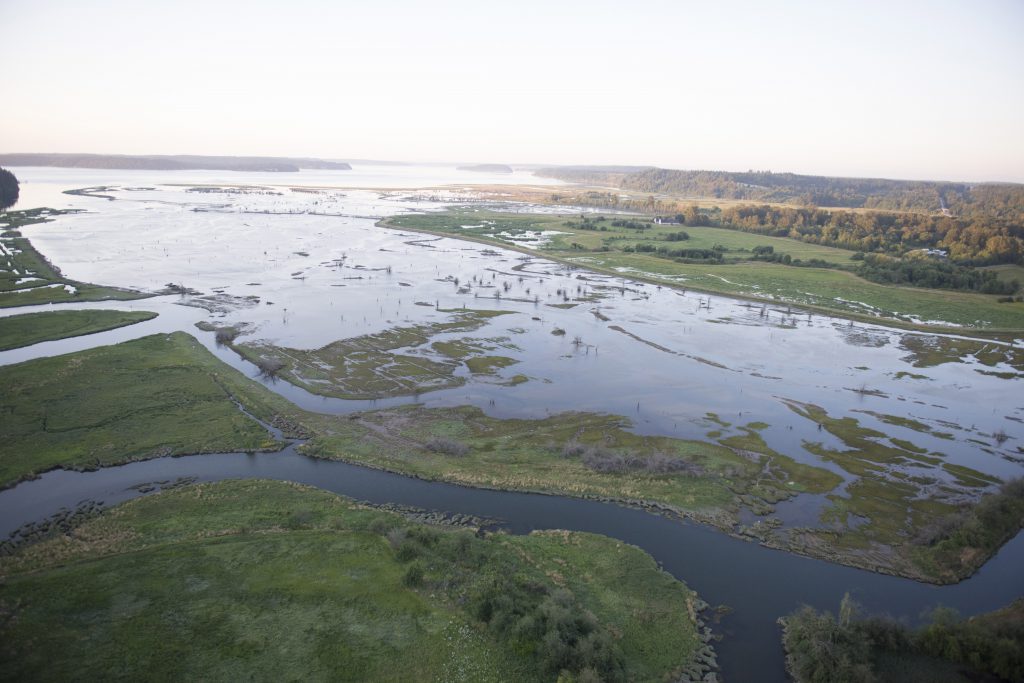
Congress increased funding for the Puget Sound Geographic Program, which funds a lot of important projects related to the Action Agenda that are focused on improving water quality, restoring habitat, and protecting shorelines, among other aims. What does that funding mean for recovery overall?
Ahren Stroming: It’s a game changer. It’s a significant investment. As the graphic on our factsheet illustrates, it’s almost double the amount that was going to the Puget Sound Geographic Program as recently as four years ago. That’s going to be huge for the Strategic Initiatives.
Stepping back slightly, I should say it’s important to note this is additional funding into an existing funding structure. It doesn’t need a different system set up to process it and hand it out. We already have the system, and we just have more resources for it now. I would expect—and I’ll caveat this by saying it’s up to EPA exactly what this looks like—but I would expect the vast majority of that pot of additional money to go to the three Strategic Initiatives: the Habitat, Shellfish, and Stormwater Strategic Initiatives.
“It’s a game changer. It’s a significant investment. …[I]t’s almost double the amount that was going to the Puget Sound Geographic Program as recently as four years ago.” — Ahren Stroming
All those programs have requests for proposals (RFPs). They solicit grant proposals for projects that advance those elements of Puget Sound recovery every year. So, we’ll be able to fund more of those projects. There are always projects that don’t get funded. There are project applicants who don’t apply for grants because they know there’s not enough funding. Now there will be—significantly more.
That includes everything you can think of: riparian planting; design work for culvert replacement; treating onsite sewage septic systems that are failing; outreach programs to homeowners; financing to remove stabilization in shoreline armoring. If you can think of a project that would advance Puget Sound recovery, odds are it fits into one of the Strategic Initiatives now.
I don’t know that EPA would spend this money on new efforts, but they have shown in the past that if they get new money, they’re willing to send it out in new and creative ways. For instance, right now they’re planning on soliciting $30 million worth of projects for climate resilient riparian systems. That’s specifically looking at incentives for landowners to improve riparian ecosystems for the benefit of salmon and for Puget Sound. They’re also about to release an environmental justice RFP.
I hope that some of the funding would also go towards increasing base awards for us and for our partners. Additional capacity support is important infrastructure for the recovery system to get this funding out the door.
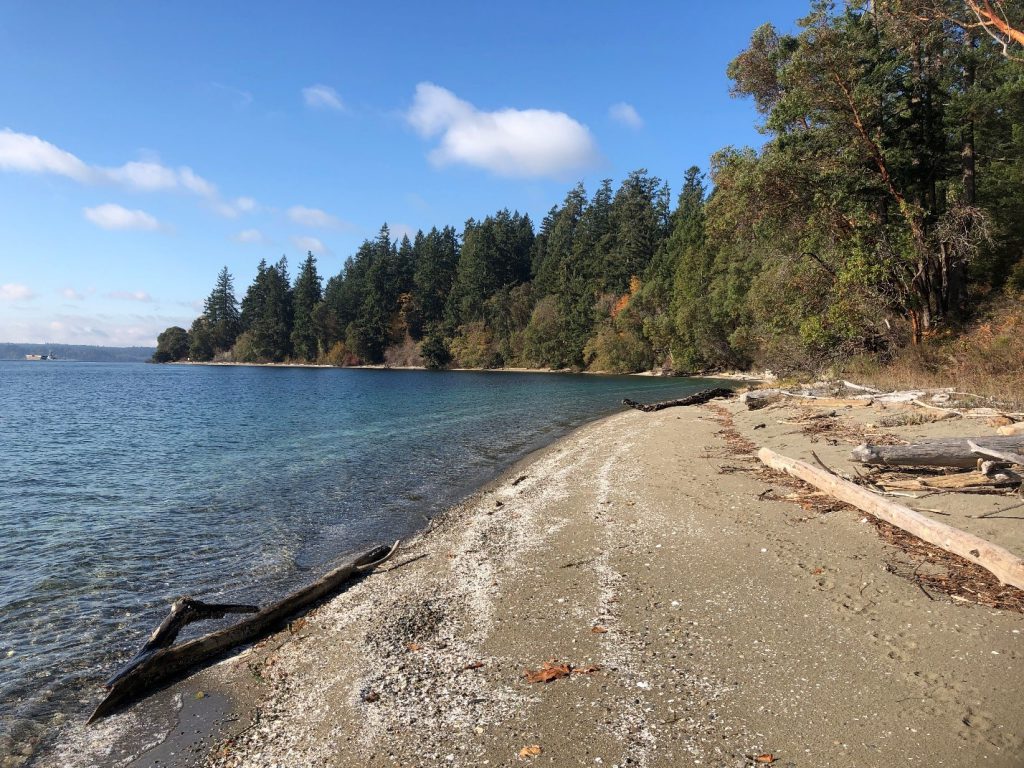
How do you think federal investments in salmon recovery will help us make progress in recovering those salmon populations?
Ahren Stroming: Similarly, those pots of money have long been central pillars of salmon recovery in, well, the whole country—but especially in Puget Sound. We’re thrilled that all the amounts are holding steady, and in many cases increasing.
Those pots of funding can go towards carrying out conservation efforts to improve salmon habitat in rearing areas and spawning areas. The funding can go in some cases towards increasing hatchery production, which can take some pressure off wild fish populations and support orca recovery. It can help enforce and implement treaties with Canada to ensure that we’re collaborating across the international boundary to prevent overfishing.
Like with the Puget Sound Geographic Program funding, there wouldn’t be any new or different programs, and that’s a good thing. We don’t need to create new initiatives necessarily and start over on the learning curve. We have systems in place and we’re providing the funding to make sure partners can do the important work they need to do.
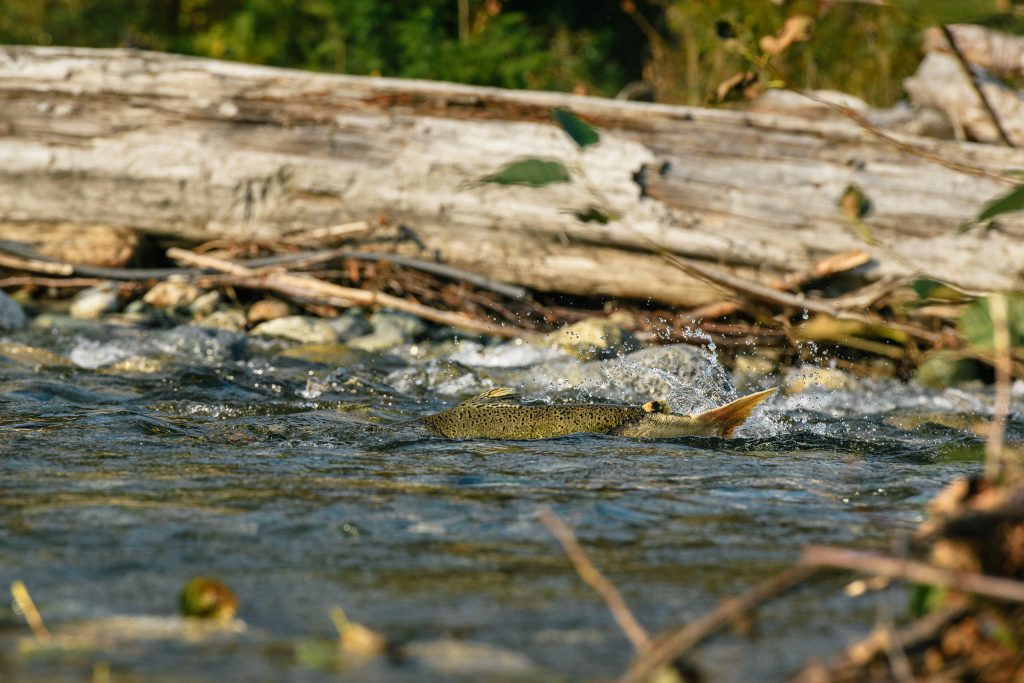
What are some new initiatives or programs and offices that were included in the National Defense Authorization Act? For example, what’s the new Whale Desk?
Ahren Stroming: That’s probably the most innovative and exciting initiative that was part of the National Defense Authorization Act. The Whale Desk is a concept that has been put into effect with good results by the Canadian Coast Guard north of the border, but we didn’t have a comparable program south of the border.
Essentially it monitors whale locations based on reports coming through the Whale Report Alert System, and it relays that information to vessel captains, mariners of commercial vessel traffic, so they can take real-time action to avoid vessel strikes of those whales—they can slow down, chart a slightly different course, or take appropriate action to make sure that they’re not adversely impacting the whales.
“The Whale Desk will also be a targeted educational initiative that talks to the people who can take measures to avoid impacts to whales.” — Ahren Stroming
It’s that real-time information that’s so critical because these are boats that are moving at 20 to 30 knots through the Sound. It creates some of that muscle memory for mariners and captains coming through our waters to expect to be on the lookout and take appropriate action for whales.
The Whale Desk will also be a targeted educational initiative that talks to the people who can take measures to avoid impacts to whales. So, they can educate about appropriate speeds, about buffer areas to keep space from feeding grounds, things like that. We expect the Whale Desk to be a partnership with Quiet Sound Initiative, which was an initiative with the governor that started last year.
There’s also a new grant program for vessel quieting technology that directs the Maritime Administration to work with the shipping industry to identify and develop technologies and best practices that can make ships quieter, more efficient, reduce cavitation, and increase electrification. It also helps ports manage vessel traffic to reduce disturbance and noise levels.
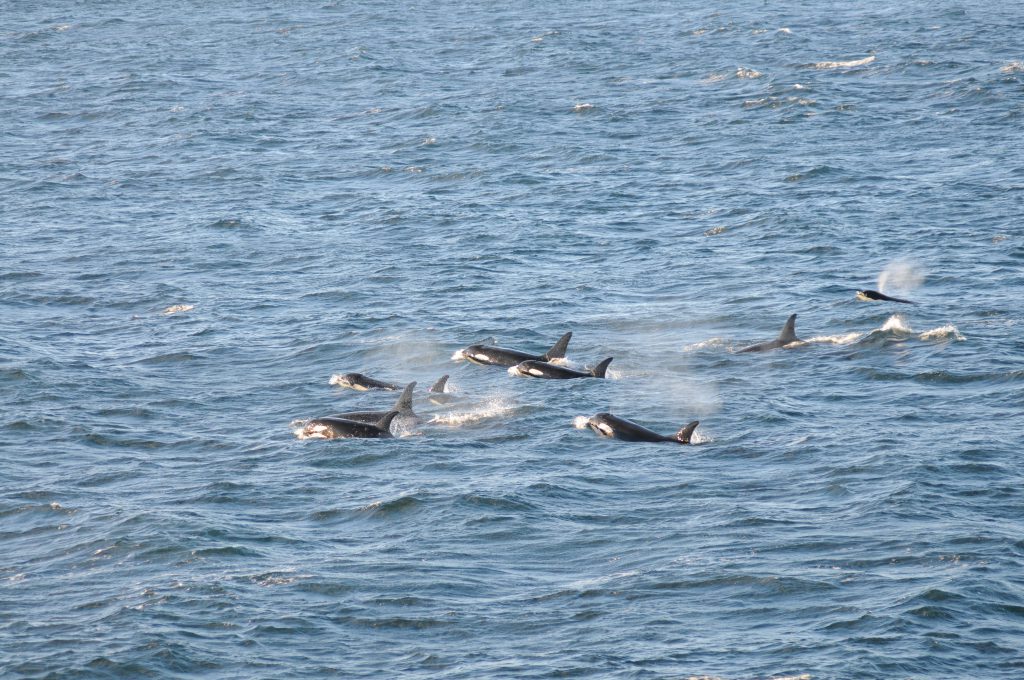
What other notable programs or investments do you want to highlight?
Ahren Stroming: Certainly, the Howard Hanson Dam is getting a big investment to improve downstream fish passage. That’s going to open up a lot of excellent fish habitat up and downstream of the dam.
There’s progress for the Duckabush estuary as well. That’s a part of the Puget Sound Nearshore and Estuary Restoration Project. It’s the lead pilot project of that initiative. It’s stumbled because of a disagreement between the Army Corps and the state on who exactly has to pay for what. This clarifies or solves that disagreement, and ultimately will mean more federal investment in Puget Sound.
There’s also money for different watersheds around Puget Sound, for the Green Duwamish in the Seattle area—for a bunch of small restoration projects there.
There’s funding for the Dungeness River in the north Olympic Peninsula, which has suffered from low flows in recent years, especially with the warming climate. This would create a restoration reservoir project to ensure adequate flow levels for salmon and for steelhead.
There’s also direction for the Army Corps to start looking at changes to operations at the Ballard Locks that could help fish passage there.
And it includes support for Sea Grant, which is an important program, both for the science that it supports and advances—including things like addressing invasive green crab in Puget Sound—but also the pipeline of talent that it directs towards Puget Sound recovery.
Students in universities that are channeling the resources and investment of the entire university through themselves into their work through Sea Grant, and then into their careers after that. The fingerprints of Sea Grant are all over Puget Sound recovery, which is a great thing.

